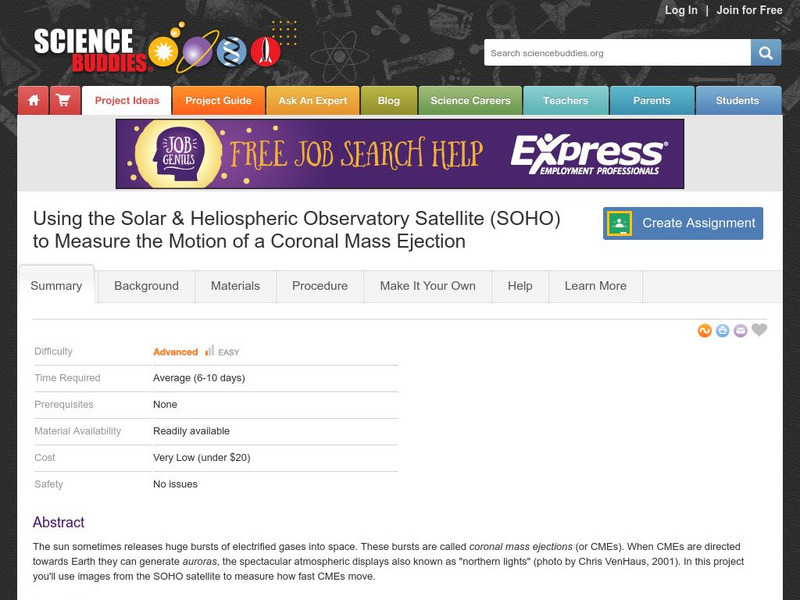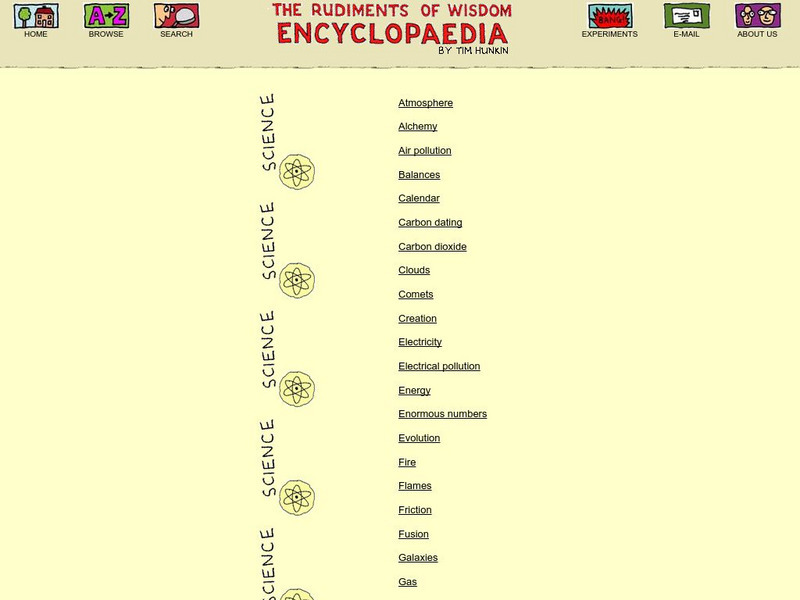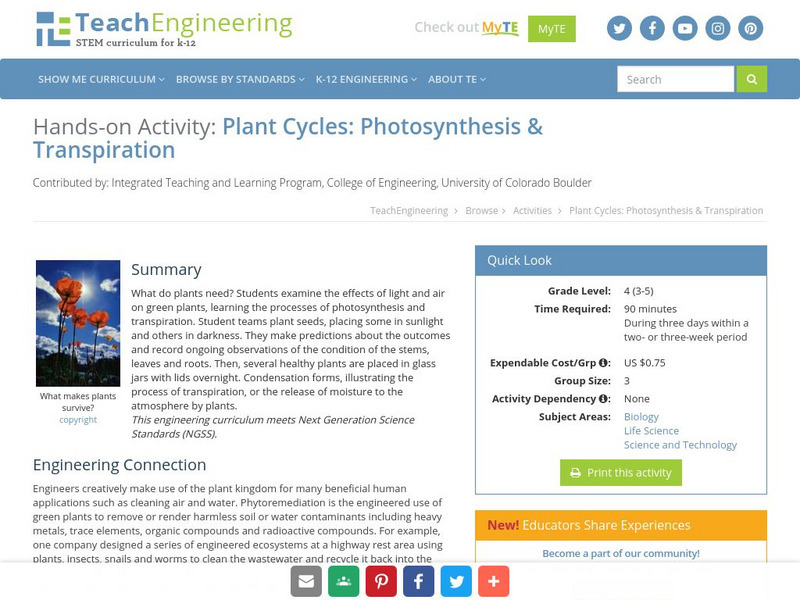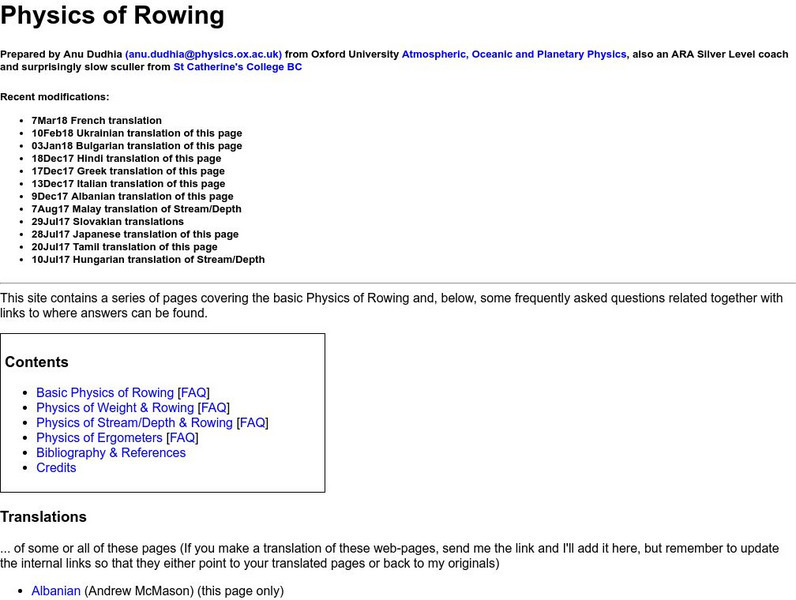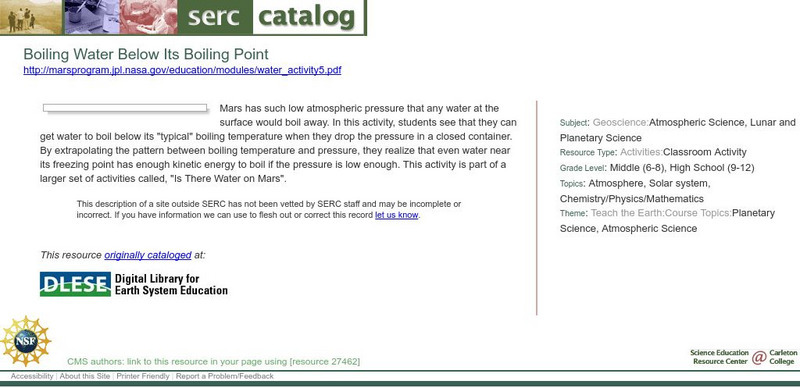Other
Digital Library for Earth System Education: Teaching Box: Essentials of Weather
A suite of lessons focusing on the basic elements of climate and weather. Inquiry-based exploration of extreme weather events and the factors of weather including clouds, wind, air pressure, temperature, and the water cycle.
Science Buddies
Science Buddies: Observatory Satellite Measures Motion of Coronal Mass Ejection
The sun sometimes releases huge bursts of electrified gases into space. These bursts are called coronal mass ejections (or CMEs). When CMEs are directed towards Earth they can generate auroras, the spectacular atmospheric displays also...
Rudiments of Wisdom
Rudiments of Wisdom: Science
Browse this index to find fun, hand-drawn cartoons that simplify and explain many science topics, including atmosphere, evolution, fusion, static electricity, and time. Cartoons are created by engineer-turned-cartoonist, Tim Hunkin,...
Other
Few: Human Impact on the Environment & Environmental Impact on Humans
Human beings have an enormous impact on the natural environment, and ultimately on each other. The way we chose to house, clothe, shelter, and meet the needs for vital resources such as food, energy, and water, not only affect the...
NASA
Nasa Star Child: The Sun
Get to know our nearest star with this introduction to the sun. Listen to the information in an audio file. Vocabulary words are linked to a glossary of terms. Features include links to other interesting facts and a printable version of...
Science Education Resource Center at Carleton College
Serc: Carbon Footprint Exercise
A three-step assignment for students in introductory geoscience that asks them to calculate their carbon footprint during one specific week. The goal of the assignment is to increase student awareness of the various sources of energy...
Science Education Resource Center at Carleton College
Serc: Mn Step: Why Is the Sky Blue?
Students will learn about refraction and the scattering of sunlight as it enters the atmosphere, which causes the colors in light to separate, giving us blue skies and colorful sunrises and sunsets.
TeachEngineering
Teach Engineering: Plant Cycles: Photosynthesis & Transpiration
What do plants need? Students examine the effects of light and air on green plants, learning the processes of photosynthesis and transpiration. Student teams plant seeds, placing some in sunlight and others in darkness. They make...
University of Oxford (UK)
Oxford University: Faq: Physics of Rowing
From the Department of Atmospheric Physics at Oxford University, this page gives a scientific look at the techniques involved in the activity of rowing. Discusses the concepts of propulsion, resistance, kinetic energy, and much more...
University Corporation for Atmospheric Research
Ucar: Why Does Climate Change?
Factors that have the power to change global climate can be natural, like volcanic eruptions and changes in solar energy, or caused by humans, like the addition of greenhouse gases to the atmosphere.
Science Education Resource Center at Carleton College
Serc: Boiling Water Below Its Boiling Point
Mars has such low atmospheric pressure that any water at the surface would boil away. In this activity, students see that they can get water to boil below its "typical" boiling temperature when they drop the pressure in a closed...
PBS
Pbs Learning Media: Environmental Public Health: Understanding Air: Air Pollution & Modeling Pollutants With Lego Bricks
For this lesson, students learn about the chemical reactions that release various pollutants into the atmosphere and what happens when pollutants in the air are exposed to sunlight. They model incomplete combustion using LEGO bricks, and...
TeachEngineering
Teach Engineering: Planting Thoughts
Students gain an understanding of the parts of a plant, plant types and how they produce their own food from sunlight through photosynthesis. They also learn about transpiration, the process by which plants release moisture to the...

